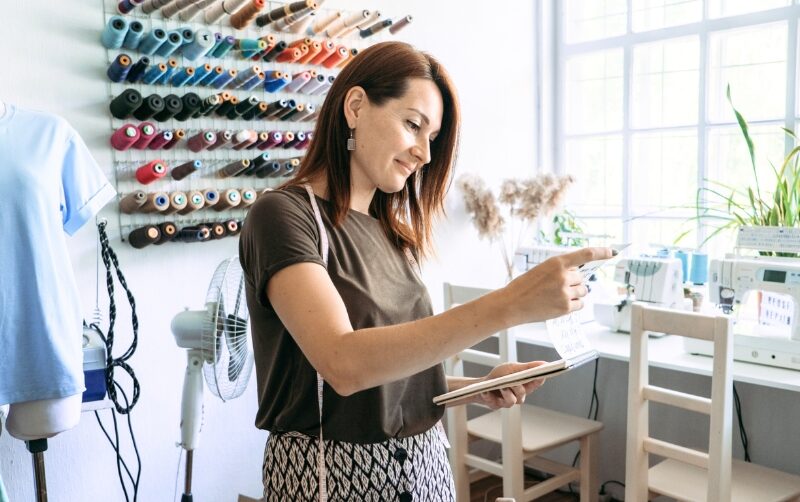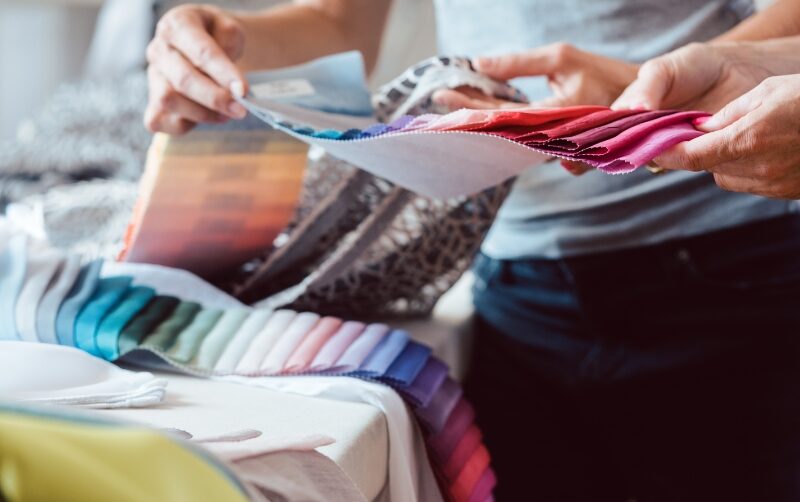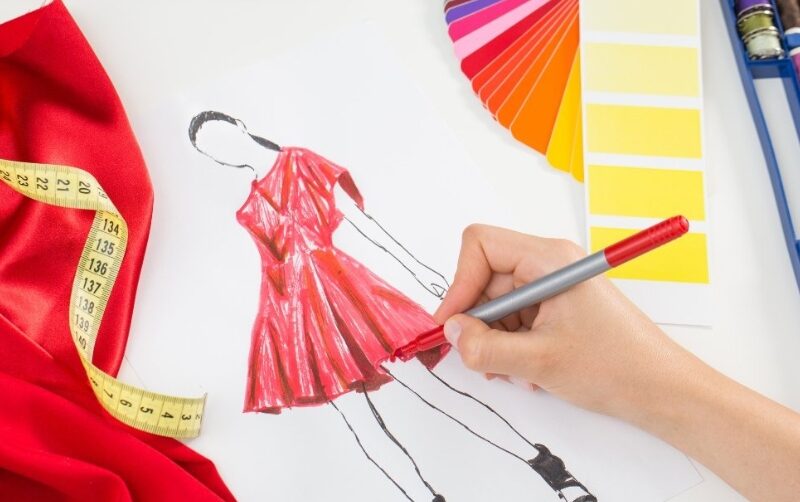
Using licensed fabrics in your sewing and crafting projects might seem straightforward, but there are legal restrictions that every maker – whether hobbyist or small business, should be aware of. From personal use to selling handmade items, this guide explores the rules around intellectual property law, licensing, and when it’s legally acceptable to use branded fabrics
What Are Licensed Fabrics?
Licensed fabrics feature designs, logos, and characters from trademarked and copyrighted brands, such as Disney, Marvel, Harry Potter, and major sports teams for example. Many fabric designers also trademark their motifs, prints and artworks. Fabric manufacturers and suppliers purchase a licence to produce and sell these fabrics to consumers, but that licence does not extend to the end-user for commercial use.
Personal Use vs. Selling Handmade Items
✔ Personal Use – Generally Allowed
If you are sewing for yourself, creating gifts for family and friends, or making memory keepsakes for personal use, you are not violating copyright laws. The issue arises when you try to sell products made from licensed fabric.

❌ Selling Handmade Items – Legal Risks
Many people assume that purchasing licensed fabric gives them the right to sell handmade items made from it, but this is not the case. The fabric manufacturers hold the licence, not the individual crafters who purchase the fabric. Using licensed fabric to create products for sale can be considered copyright and trademark infringement.
Most licensed fabrics include disclaimers such as: “For Personal Use Only – Not for Commercial Use.” If you sell items made from licensed fabric, you could receive a cease-and-desist letter, or worse, face legal action.
Understanding Intellectual Property Laws
Copyright & Trademark Protection
- Copyright protects original creative works (e.g. Disney character illustrations, movie franchise logos).
- Trademarks protect brands, logos, and slogans from being used commercially without permission.
- Selling items made from copyrighted fabric violates the copyright holder’s rights because the designs are legally protected.
How Licensing Works
- Fabric manufacturers purchase a licence from rights holders (e.g. Disney, Warner Bros.) to print and sell fabric.
- This licence does not transfer to buyers of the fabric.
- If you wish to sell items using branded materials, you would need your own licence from the copyright owner, which is expensive and difficult for small businesses to obtain.
Has Anyone Been Taken to Court?
Yes. Large companies actively protect their trademarks and do pursue legal action against small makers.
- Disney, in particular, is known for enforcing copyright infringement cases. They hire people to seek out individuals and small businesses selling unauthorised merchandise featuring their characters.
- In 2021, a UK Etsy seller was issued a legal notice for selling handmade baby bibs using Peppa Pig fabric.
- A small maker selling Marvel-themed cushions was forced to remove all listings after receiving a cease-and-desist letter.
- Some crafters have faced fines or legal settlements for continuing to sell handmade products using licensed fabric.
Even though these businesses are small, companies like Disney, Warner Bros, and Nintendo pursue legal action to protect their brand integrity.
When Is It Okay to Use Licensed Fabric?
There are some exceptions where using licensed fabric is generally acceptable:
✔ Personal Projects: You can freely use licensed fabric for yourself, gifts, or donations.
✔ Memory Items: Many crafters make quilts, cushions, or keepsakes from personal clothing (such as old Disney t-shirts) which is often considered transformative use.
✔ Upcycled Materials: If you are repurposing fabric from officially licensed products (e.g. turning a licensed pillowcase into a dress), this can sometimes fall under “fair use.”
✔ Alterations & Repairs : If someone owns a licensed fabric item and requests an alteration, this is typically not an infringement.
How to Avoid Legal Issues When Selling Handmade Items
If you run a small crafting business, here are some safer alternatives:
✅ Use Generic or Themed Fabrics
- Many independent designers create fan-inspired fabrics that do not directly copy copyrighted characters.
- Look for fabrics with generic space, fairy tale, or superhero themes rather than direct character prints.
✅ Create Original Artwork
- Design your own patterns and illustrations instead of using copyrighted designs.
- Work with independent fabric printers to create custom fabric that is unique to your brand.
- For example, some print-on-demand fabric sites (visit our supplier directory for several print-on-demand options) allow designers to create and sell their own prints legally.
✅ Obtain a Licence (If Possible)
- Some companies offer commercial-use licences to approved sellers.
- However, obtaining a Disney/Marvel licence or similar is extremely difficult for small businesses.
Using licensed fabrics may seem like a grey area, but the legal stance is clear – selling handmade items from these fabrics can result in copyright infringement claims. Large companies like Disney and Warner Bros. actively monitor, report, and take legal action, even against small makers. With recent advancements in technology, Ai can now crawl the internet with ease – specifically to seek out offenders.
If you’re sewing for personal use, you’re in the clear. But if you’re selling your creations, it’s best to use original or legally approved fabrics to avoid any legal trouble. When in doubt, stick to non-licensed designs to keep yourself and/or your business safe!


